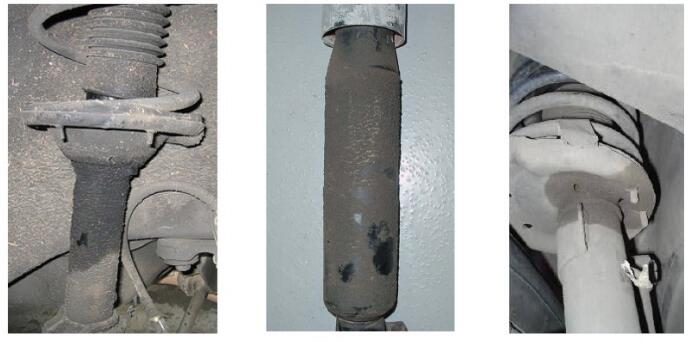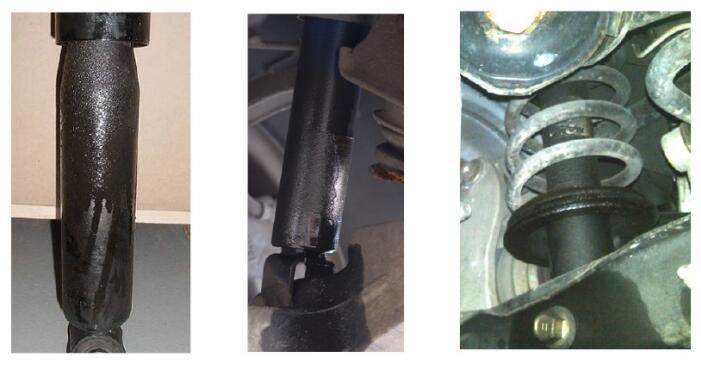SHOCK ABSORBER - MISTING VS EXCESSIVE LEAKAGE
A vehicle must be failed if a shock absorber has excessive leakage of damping fluid. However, it seems that quite a few inspectors are incorrectly failing a vehicle when the shock absorber only displays “misting”.
Therefor, inspect the condition of oil leakage is necessary required.
Misting is normal on shock absorbers.
A shock absorber that has slight oil seepage, a condition which is considered normal, does not affect shock absorber operation or performance, and does not require replacement.
By design, the piston rod carries a film of oil through the rod seal to lubricate the seal lips, thereby reducing friction/wear at the seal contact area, and prolonging seal life. Misting occurs when the hot piston rod is drawn out of the shock absorber body and the microscopic film of hot oil on the rod turns to vapour. This vapour, or mist, condenses when it reaches the cooler outside air, and forms a film on the outside of the shock absorber body. The film will attract road dust and debris, and will often coat the entire body of the shock absorber.
Examples of misting shock absorbers

Rod seals may leak as a result of extreme wear, contamination, or defect. A leaking shock absorber will show clear signs of oil leaking in streams from the upper seal down the shock absorber body and may drip from the shock absorber.
Examples of excessively leaking shock absorbers

Note: Some minor streaking of oil may appear on a new shock absorber body during initial stroking. This is the result of the seal "setting" and purging any oil (from assembly) from the seal. This is not to be mistaken as a failure, as it is temporary and totals only a few millilitres of oil.